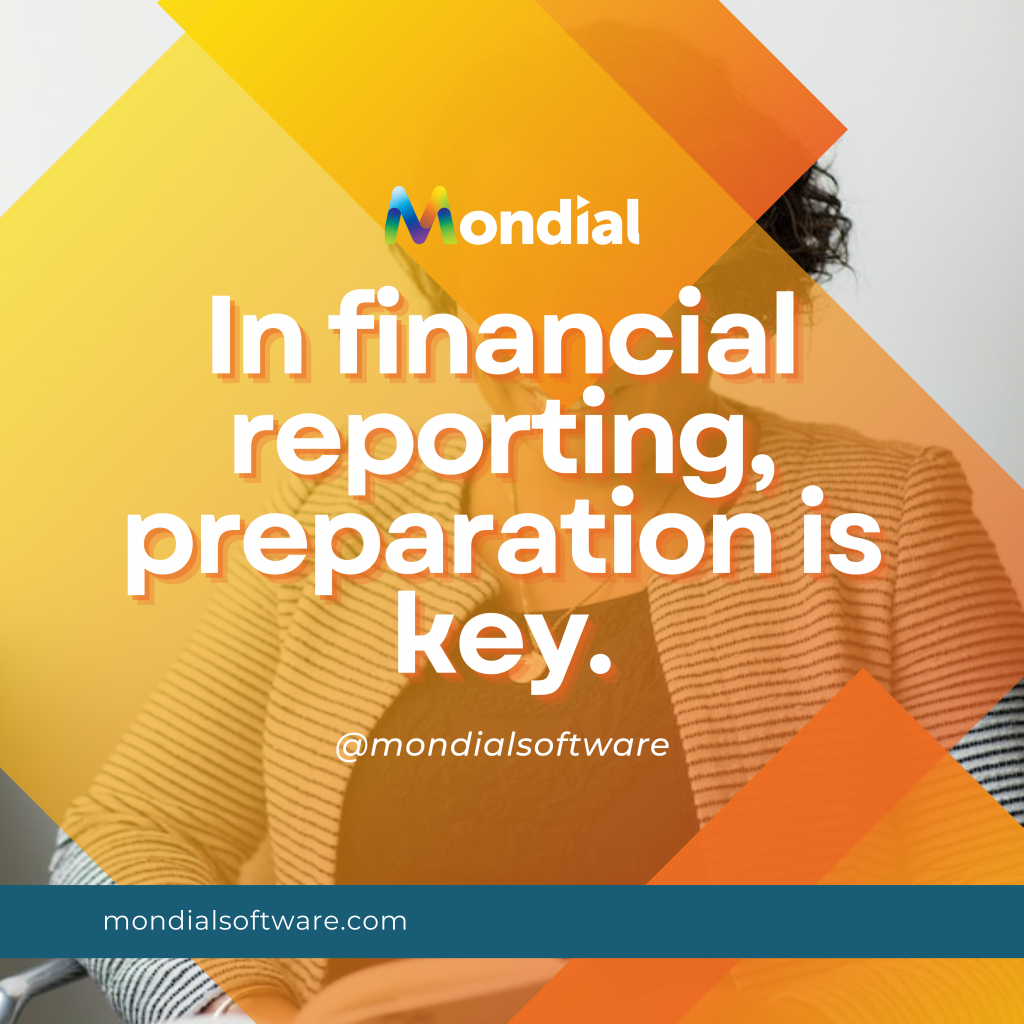Ultimate Guide to Optimizing Your Financial Close Process

“Optimizing your financial close process is not just about speed, but clarity. It’s the difference between navigating your financial journey with a foggy windshield or a clear vista.”
What is the month-end close?
The month-end close process is a set of procedures used by accounting teams to finalize and “close the books” for a specific month, ensuring that all financial transactions for the month are accurately recorded and reported. This process ensures that the company’s financial statements are complete, accurate, and in compliance with accounting standards, making them ready for internal review, external audit, or any other necessary reporting.
At a Glance Checklist of the month-end close:
-
Reconciliation of Accounts: This involves ensuring that account balances match between various systems. For instance, a company might reconcile its bank statements to the balances in its accounting software.
-
Review and Post Accruals: Accrual accounting recognizes revenue and expenses when they are incurred, not necessarily when cash changes hands. At month-end, accountants make sure that all revenues and expenses are recorded in the correct period.
-
Fixed Assets Management: Review and record monthly depreciation. If any assets were bought or sold, those transactions should also be recorded.
-
Inventory Adjustments: If applicable, count and value inventory. Make any necessary adjustments to write off obsolete items or recognize shrinkage.
-
Review and Adjust Journal Entries: Examine journal entries for errors, make corrections, and post final entries.
-
Intercompany Reconciliations: For businesses with multiple entities or subsidiaries, it's crucial to reconcile intercompany transactions and ensure eliminations are handled correctly.
-
Review Financial Statements: Once all adjustments and reconciliations are done, review the Income Statement, Balance Sheet, Cash Flow Statement, and any other required financial statements for accuracy.
-
Close the Accounting Period: This involves locking the period in the accounting system to prevent further changes.
-
Report Generation: Generate financial reports for internal and external stakeholders. This might include management reports, board reports, or other analytics.
-
Review Variance: Compare the current month's financial results to budgeted or forecasted amounts and to prior periods to understand any variances. Investigate any significant or unexpected variances
-
Documentation and Compliance: Ensure that all month-end activities, reconciliations, and support are well-documented for audit purposes. Compliance checks with relevant accounting standards (like GAAP or IFRS) should also be performed.
-
Communication: Communicate the results and any significant findings to stakeholders. This might involve meetings with management, departments, or other relevant teams.
-
Continuous Improvement: After the close, it's beneficial to have a debrief or review session. Discuss what went well, what challenges arose, and how the process can be improved for the next month.
Why is the month-end close process important?
The month-end close process is crucial for several reasons:
Financial Accuracy: The primary goal of the month-end close is to ensure that the financial statements accurately reflect the company’s financial position and performance for the month. Without this process, errors and discrepancies can accumulate, leading to misstated financial results.
Regulatory and Compliance Needs: Companies, especially those that are publicly traded, must adhere to strict accounting standards such as GAAP (Generally Accepted Accounting Principles) or IFRS (International Financial Reporting Standards). Properly executed month-end close processes ensure compliance with these standards, helping avoid penalties, fines, or legal consequences.
Operational Insight: Regular closing of the books provides management with timely information about the company’s financial health, enabling informed decision-making. Managers can assess profitability, manage cash flows, and monitor key performance indicators.
Budgeting and Forecasting: Comparing actual financial results with budgeted figures can reveal variances that require management attention. Understanding these variances helps in refining future forecasts and making necessary budgetary adjustments.
External Reporting: Investors, creditors, analysts, and other stakeholders rely on accurate financial statements to evaluate the company’s performance, health, and potential risks. A consistent month-end close process ensures these stakeholders receive reliable information.
Audit Preparedness: A disciplined month-end close process means that the company is always prepared for external audits. Consistent, well-documented procedures reduce the time and effort required for audit reviews and decrease the likelihood of audit issues or findings.
Cash Flow Management: By routinely reviewing accounts receivable, accounts payable, and other relevant financial data, companies can better manage their cash flows, ensuring they have enough liquidity to meet their obligations.
Risk Management: Regularly closing and reviewing the books can help in identifying unusual transactions or trends that might indicate fraud, operational issues, or other risks. This early detection can help in taking corrective measures promptly.
Stakeholder Confidence: A consistent and accurate month-end close process can build confidence among stakeholders, including investors, creditors, employees, and customers. It signals strong financial governance and management discipline.
Continuous Improvement: By making the month-end close a routine process, companies can continually refine and optimize their accounting practices. Over time, this can lead to faster closes, more accurate reporting, and greater operational efficiency.
Best Practices for an Optimized Month-end close
Prep the Day-to-Day Entries
This refers to the routine recording of daily financial transactions, such as sales, purchases, payments, and receipts. It also includes Proper documentation of supporting information, like invoices, receipts, and contracts.
Accurate daily entries ensure that the financial records consistently reflect the company’s activities, providing real-time insights. This streamlines the subsequent stages of the financial close process by reducing discrepancies and errors that arise from inaccurate or missing entries.
The pre-close preparation stage is a pivotal step in the financial close process. It sets the foundation for a smooth and efficient main close by ensuring that all financial transactions and accounts are in order. Let’s delve deeper into the intricacies of pre-close preparation:
Review All Pending Transactions and Documents
Examining transactions that are still in progress or haven’t been finalized by the end of the accounting period. This also includes verifying that all documentation, such as invoices or purchase orders, is complete and accurate. This is to ensure that no transaction is overlooked and provides an accurate representation of the company’s financial activities for the period.
Resolving pending transactions reduces complexities and potential discrepancies during the main close.
Review current financial documents:
- Bank statements
- Financial reports
- Balance sheets
- Income statements
- General ledger accounts
- Journal entries
- Ledger control accounts
- Vendor invoices and payments
- Expense documents and reports
- Reconcile data against records
Resolving these challenges ensures that the financial statements produced provide a true and fair view of the company’s financial activities for the period in coverage.
Ensure All Entries are Correctly Coded and Classified
Reviewing the general ledger and other financial records to ensure transactions are categorized appropriately, e.g., as operating expenses, capital expenditures, revenues, etc. This also means, checking that accounting codes, departmental allocations, and other classifications are correctly applied.
Correct categorization ensures financial statements are accurate and in line with accounting standards. Proper coding aids in detailed financial analysis, budgeting, and forecasting by providing clear data breakdowns.
Preliminary Reconciliations (e.g., bank, AR, AP)
For bank reconciliations, matching the company’s internal financial records with bank statements to verify balances align.
- Accounts Receivable (AR) reconciliations involve verifying the amounts owed by customers against outstanding invoices.
- Accounts Payable (AP) reconciliations include confirming amounts the company owes to suppliers or service providers.
Reconciliations identify discrepancies early, allowing for timely corrections and reducing potential errors in financial statements. More than anything reconciliations ensure cash flow, revenue, and expense figures are accurate, aiding in liquidity management and financial decision-making.
Communicate with Other Departments for Data Needs
Engaging with various departments, like sales, procurement, or operations, to gather relevant financial data or verify specific transactions.
This step in the preparation phase ensures inter-departmental alignment on financial figures and key performance indicators. Remember, departments outside finance often hold critical data, such as sales figures, inventory levels, or operational expenses, which impact financial statements. Clear communication fosters a cohesive and holistic view of the company’s financial health, ensuring all teams are aligned in their reporting and decision-making.

Your Next Steps:
💡Click here to reduce time spent on period-end reporting
🔋Click here if you wish to solve 25+ Spreadsheet reporting issues
🔆 Click here to improve the accuracy and usability of generated reports
💯 Click here to decrease risk by providing on-demand access to the transaction detail behind every reported balance
☎️ Book a free, no-obligation walkthrough with Mondial to see how we can help you in financial reporting and consolidations just like one of our successful clients.
